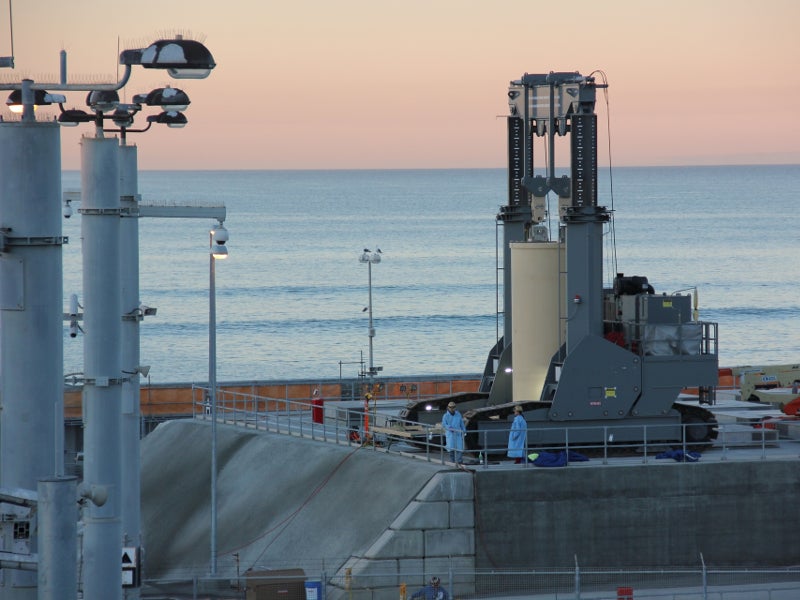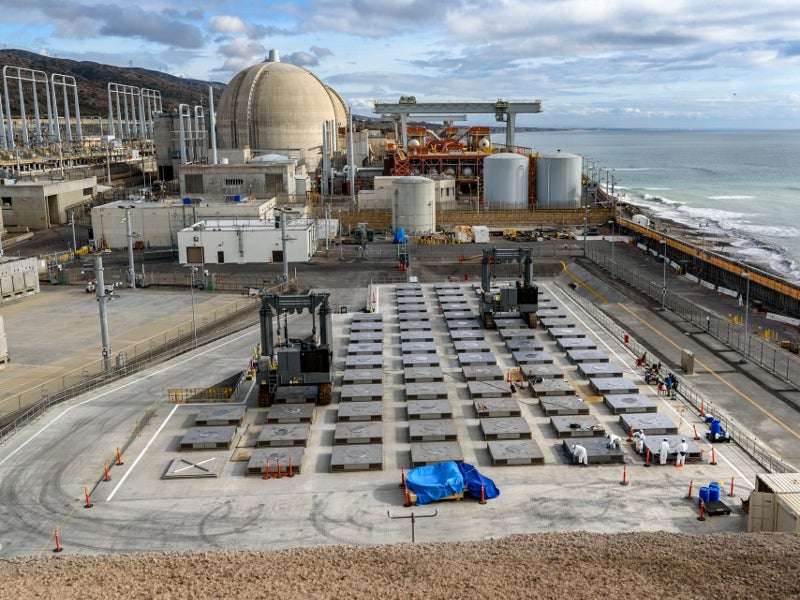The San Onofre Nuclear Generating Station (SONGS) located 6km south of San Clemente, California, US, is being decommissioned after operating for more than 40 years.
The power station is owned by Southern California Edison (78.2%), San Diego Gas and Electric Company (20%), and the City of Riverside (1.8%).
Southern California Edison (SCE), the operator of the facility, announced the permanent shutdown of San Onofre units two and three in June 2013 and initiated the plant decommissioning process by transferring reactor fuel to the spent fuel spool in the month that followed.
The San Onofre decommissioning contract was awarded in December 2016, while the California Coastal Commission approved a coastal development permit for decommissioning the plant, in October 2019.
The dismantling of major structures of the plant is expected to be started in 2020, with the site restoration expected to be achieved by 2028.
The £3.5bn ($4.4bn) San Onofre decommissioning project is expected to create 600 jobs during the dismantlement phase.
San Onofre decommissioning background
The San Onofre nuclear power plant commenced operation with the commissioning of a 456MW pressurised water reactor (PWR) in 1968. San Onofre Unit-1 was permanently shut down in 1992.
San Onofre PWR units two and three of 1,127MW gross capacity each were commissioned in August 1983 and April 1984, respectively. The San Onofre units two and three generated enough power to serve approximately 1.4 million US homes.
Each unit was installed with two replacement steam generators from Mitsubishi Heavy Industries (MHI) between 2009 and 2010.
Both the reactor units were, however, taken offline in early-2012, after a tube leakage was detected in one of the four new steam generators.
Anticipating significant maintenance cost and regulatory delays to restart the reactors, SCE found it economical to permanently shut down the reactors in June 2013.
San Onofre NPP decommissioning project history
The post-shutdown decommissioning activities report (PSDAR) for the San Onofre units two and three was submitted to the US Nuclear Regulatory Commission (NRC) in September 2014.
The NRC issued permanently de-fuelled technical specifications for the decommissioning project in July 2015.
The California Coastal Commission approved independent spent fuel storage installation (ISFSI) expansion for the project in October 2015. The ISFSI contract for the project was awarded in December 2014.
The dry cask storage facility was expanded in November 2017, while the transfer of spent nuclear fuel from wet to dry cask storage facility was initiated in January 2018.
The California State Land Commission (CSLC) approved the San Onofre decommissioning project’s final environmental impact report in March 2019.
San Onofre nuclear power plant decommissioning details
Preliminary activities related to the decommissioning involved downsizing ocean water intake pumps serving the units two and three, installation of a new spent fuel pool cooling system to replace the previous ocean water once-through cooling system, and construction of an onsite ISFSI.
San Onofre unit one was decommissioned in safe storage (SAFSTOR) method and all structures and components, except reactor vessel, below-grade buildings, and spent fuel, were dismantled and shipped for disposal.
The same SAFSTOR method will be employed for decommissioning units two and three.
Movement of all used nuclear fuel from the cooling pools to the dry cask storage facility is expected to be completed by the end of 2019, while the dismantling of structures and components is expected to be started in 2020.
The power plant site is expected to be restored by 2028, while complete decontamination of the site is expected to be completed by 2051.
San Onofre ISFSI details
The Holtec International Storage Module Underground Maximum Capacity (HI-STORM UMAX) vertical ventilated ISFSI at San Onofre comprises 37 multi-purpose canisters for interim dry storage of spent nuclear fuel.
With its confinement boundary made-up of corrosion-resistant 316L grade austenitic stainless steel, each canister can safely store up to 37 used fuel assemblies.
The spent fuel is planned to be relocated from the site to a facility identified by the government after 2035.
Contractors involved
SONGS Decommissioning Solutions (SDS), a joint venture between AECOM and EnergySolutions, received the general contract for the San Onofre decommissioning project in December 2016.
Holtec International was awarded the engineering, procurement, and construction (EPC) contract for the de-fuelling and safe storage of spent nuclear fuel in an onsite ISFSI in December 2014.







